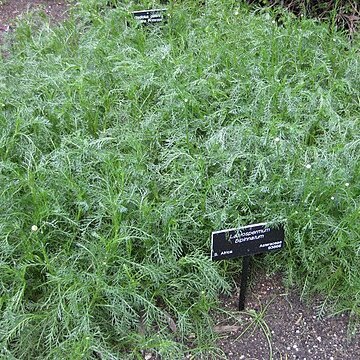Perennial, much-branched herb, up to 0.6 m high, erect but becoming decumbent with age. Leaves alternate, bipinnatisect, lobes linear, mucronate with hard white mucro, margins irregularly serrate, yellow-green, initially sparsely long-pilose, soon glabrous; petioles semi-amplexicaul, sheathing. Capitula radiate, terminal, solitary, long pedunculate; involucral bracts in 3 or 4 rows, imbricate, outer narrowly oblong to lanceolate, inner broadly lanceolate to ovate, with narrow membranous margins, glabrous. Receptacle flat or convex, paleate, paleae membranous. Ray florets female, corolla white or pale red-purple, sometimes absent. Disc florets many, corolla tube campanulate above, with 5 ovate lobes, pale yellow. Flowering time all year. Pappus absent. Cypselae dark yellow-brown, smooth, lanceolate, flattened triangular, densely white-woolly.
Perennial herb, up to 0.6 m high; erect but becoming decumbent with age, much branched. Leaves alternate; blade bipinnatisect, lobes linear, mucronate with hard white mucro, margins entire, initially sparsely long-pilose, soon glabrous, yellow-green; petiole semi-amplexicaul, sheathing. Heads radiate or discoid, terminal, solitary, long pedunculate. Involucral bracts 3-or 4-seriate, imbricate; outer narrowly oblong to obovate; inner broadly obovate to ovate, with narrow membranous margins, glabrous. Receptacle paleate. Flowers: ray florets female, corolla white or pale red-purple, sometimes absent; disc florets many, corolla tube campanulate above, with 5 ovate lobes, pale yellow; Aug., Nov., Dec. Fruit with cypsela dark yellow-brown, smooth, narrowly ovate, flattened triangular, densely white-woolly. Pappus absent.
Perennials to c. 40 cm high, glabrous, with eglandular stems and leaves. Leaves to c. 5 cm long, fleshy; primary segments to c. 10 per side; rachides and ultimate segments 0.8–1.5 mm wide. Capitula 20–25 mm diam.; peduncle 10–30 cm long; peduncular bracteoles several, ovate-lanceolate; disc c. 7–10 mm diam.; involucre 4–5 mm long; bracts not keeled nor with pigmented margin; inner bracts with hyaline extension 1–2 mm long; mature receptacle convex; paleae ±narrowly oblong, c. 2.5 mm long, c. 1 mm wide, acute, hyaline, with a red resin duct medially. Ray florets 15–20; ligule c. 10–15 mm long, white. Disc florets: corolla c. 3 mm long; tube narrower and slightly shorter than limb; limb yellow. Achenes narrowly obloid, c. 4 mm long, completely hidden by a dense long tan-coloured wool.
Glabrescent perennial, up to 600 mm tall, with erect to sprawling stems from woody rootstock. Leaves bipinnatisect, 30-80 mm long, lobes linear, sparsely hairy when young, soon glabrous. Flowerheads solitary on long, naked peduncles, radiate (rarely discoid), globose, (10-)15-25 mm diam.; involucral bracts subglabrous with membranous tips; ray florets white to pink; disc florets yellow. Cypselas white-woolly; pappus absent.
Decumbent to erect herb, up to 400 mm tall. Leaves alternate, bipinnatisect, lobes apiculate. Heads solitary on long peduncles. Pappus absent. Flowers with white to pale purplish pink rays, disc yellow.
Glabrescent perennial with erect to sprawling stems from woody rootstock, to 60 cm. Leaves bipinnatisect. Flower heads radiate, globose, yellow with white rays.

